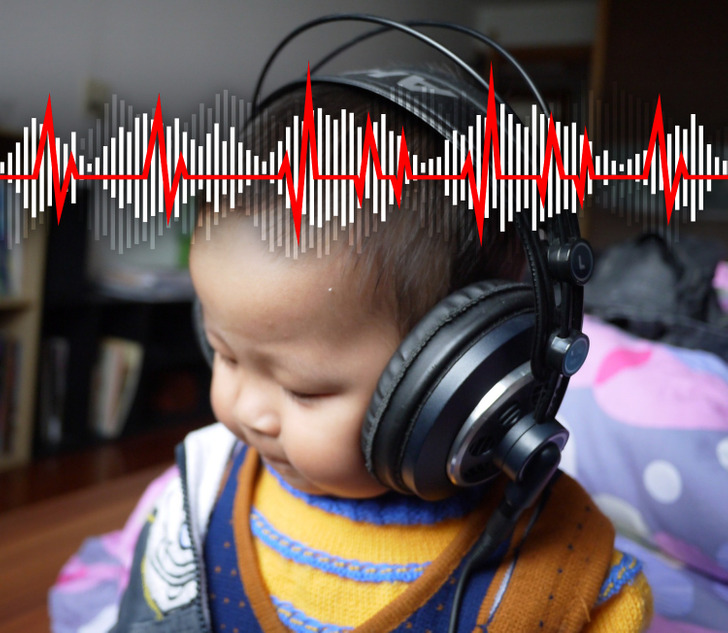19 Essential Facts That Might Change Your View on Familiar Things

We are one with the universe, and we don’t just mean that figuratively. Science tells us that most of our body is made of cosmic dust. And speaking of the universe, it might come as a shock to find out that it is beige rather than dark blue. Some facts are so astonishing, they might be hard to believe at first despite being scientifically proven.
CHEERY has gathered 19 fascinating truths that will make you never look at some things the same way again.
1. Mosquitoes are attracted to certain colors.

We might not expect this, but what we are wearing can have a direct effect on why mosquitoes won’t leave us alone. These little insects are attracted to dark colors since, according to this study, the color black catches more mosquitoes than white. The same study also tells us that these flying insects are attracted by heat which dark colors absorb more than light ones.
2. Eating before bed leads to nightmares.

Snacking on that tasty leftover right before bed might not be a great idea if you’re looking for a sound and peaceful slumber. According to this study, food intake close to bedtime can have a negative influence on sleep efficiency, especially for women. Moreover, another study suggests that consuming dairy products before bed can lead to disturbing and bizarre dreams, more than other types of food.
3. Phones are dirtier than toilets.
We might consider our smartphones to be an indispensable part of our daily lives, but this useful device might be hiding a not-so-great surprise after all. A study on secondary school students’ mobile phones revealed that they were highly contaminated with potentially pathogenic bacteria. In fact, according to scientists, cell phones carry 10 times more bacteria than most toilet seats.
4. Trees are connected to each other by an underground network.
There might be more to trees than meets the eye. It is believed that their roots are interconnected underground in what forms a gigantic network that can be visually compared to the human nervous system. According to scientists, this network allows tree communication and helps with their behavior, defense, learning, and memory.
5. The storage capacity of the human brain is 2.5 million gigabytes.
With hundreds of millions of neurons interconnecting with each other in what forms a colossal network of more than a trillion connections, there is no doubt that this fascinating organ has ultrapowerful capabilities. According to a study, the memory of our brain equals 2.5 million GBs which can be compared to holding 3 million hours of TV shows.
6. The Earth contains enough gold to cover its whole surface.
7. There are 420 trees for every person on the planet.

According to this Yale study, the Earth has 3 trillion trees. This would equal 420 trees for each living person. With all the wonderful benefits that trees have for the planet and for us humans, all we can say about this good news is that the more trees we have the better.
8. 80% of the ocean is still unexplored.
The ocean remains one of the most mysterious and bewildering things to us humans. No matter how much we uncover about it, there’s still so much to learn and reveal, since we have only explored a fifth of it. With its total volume of 1.35 billion cubic kilometers, it is safe to say that we still have a long way to go in order to uncover the infinite secrets that this enigma might be hiding.
9. Gravity makes our nose and ears grow bigger with time.

Surprisingly, the reason that the nose and ears appear bigger with age is actually the sagging of the skin and the effect of gravity on it. This also happens to the other organs of the body, however, these 2 are the most visible ones.
10. Humans, animals, and plants all evolved from the same micro ancestor.

All living things on our planet, including us humans, evolved from the same origin according to science. This would be the Earth’s original ancestor, a 3.8-billion-year-old organism named LUCA (last universal common ancestor). After all, we’re all made of cells that have common traits like ribosomes and a genetic code that is believed to go back to this one single entity.
11. Closing the eyes improves memory.

A brief moment of relaxation with the eyes completely shut never hurt anybody — on the contrary, it is believed that our memory can benefit from this brief pause. According to an experiment, 15 minutes of rest with the eyes closed after listening to a short story can help you remember the story better. Moreover, based on this study, it was found that eyewitnesses to crimes recalled more accurate details when they closed their eyes.
12. The Universe’s color is beige.
When we try visualizing the cosmos, dark shades of blue are most likely to pop into our minds as the dominating color. However, science tells us that this couldn’t be any further from the truth. Surprisingly, it turns out that the universe’s average color obtained as the resulting mix of the lights emitted by 200,000 galaxies, is beige. This color was defined as ’’cosmic latte’.’
13. Our heartbeat syncs to the music we’re listening to.
We have all experienced the uplifting and mood-altering effect that music can have on us, however, its influence doesn’t stop there. According to a study, a good tune can speak to the heart, quite literally. It was found that the heartbeat synchronizes with the musical beat. As a matter of fact, researchers have found that selections with crescendos, led to an increase in blood pressure, heart rate, and respiration. And on the other flip side, these measurements came down during decrescendos and silent periods.
14. The human eye can distinguish up to 10 million colors.
Science tells us that that the human eye is able to differentiate between approximately 10 million different colors. This might, at first, seem like an impressive amount, however when we think that a 24-bit monitor can display more than a whopping 16 million color combinations, we might start seeing things a bit differently.
15. The pink corner in the eye is our third eyelid.
Even though we all have it, we might not know much about the mysterious membrane in the corner of our eye. In fact, this tissue is the remnant of a third eyelid and is much more prominent in birds and some mammals to protect their eyes from dust. However, for us humans this membrane doesn’t actually serve a purpose and therefore it is believed that it will completely disappear over time.
16. Blinking causes the brain to rest.

With all the things our brains have to constantly process, it is fair to say that they might often need a much-deserved break. Thankfully blinking is here to the rescue about 15 to 20 times per minute. According to a study, that miniscule moment of shut-eye helps the brain to power down and go on a mental break for a split second before attention being restored once again. Therefore, according to scientists, we blink more when we are conducting a task that requires more mental activity since our brain would require more rest the more we stress it.
17. Not all oranges are orange.
These fruits might share their name with the actual color, but this doesn’t mean that all oranges are orange. As a matter of fact, oranges initially contain big amounts of chlorophyll which is the reason why this citrus is initially green-colored. As it matures, the chlorophyll dies off when they are exposed to cool temperatures and the color orange appears. This is the reason why in warmer parts of the world, oranges stay green.
18. Sitting can be bad for our memory.
Studies have already shown that sitting too much increases the risk of heart disease and diabetes. Researchers from the University of California, Los Angeles, found that sitting too much is linked to changes in a section of the brain that is critical for memory. According to their work sedentary behavior is a significant predictor of thinning of the medial temporal lobe, a brain region involved in the formation of new memories. Physical activity, even at high levels, is insufficient to offset the harmful effects of sitting for extended periods.
19. Yawning can cool the brain.
Many people think that yawning helps to increase the oxygen supply. However, previous research has failed to show an association between yawning and blood oxygen levels. Scientists from the University of Vienna have found that yawning functions to keep the brain temperature balanced. To test this researchers measured contagious yawning frequencies of pedestrians in Vienna, Austria, and Arizona, USA. The results showed that yawns help to cool the brain. As a result, it can improve mental efficiency.
Which of these facts did you find the most surprising? Are there any facts that you love and would want to share with us?











